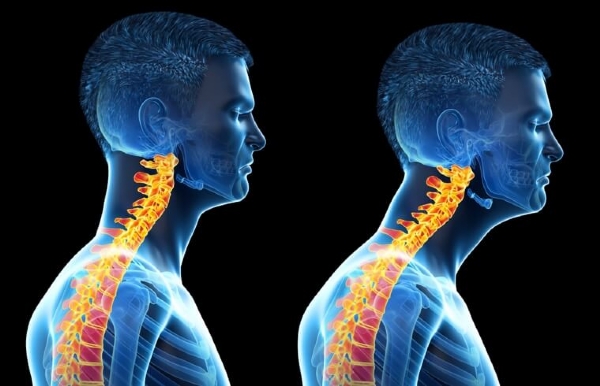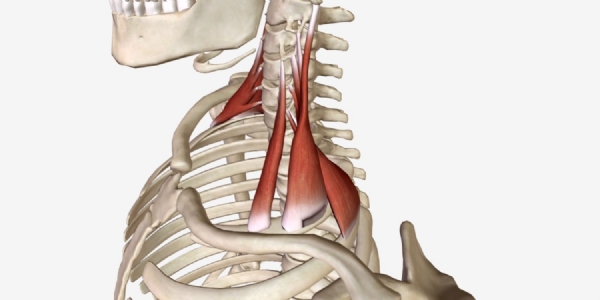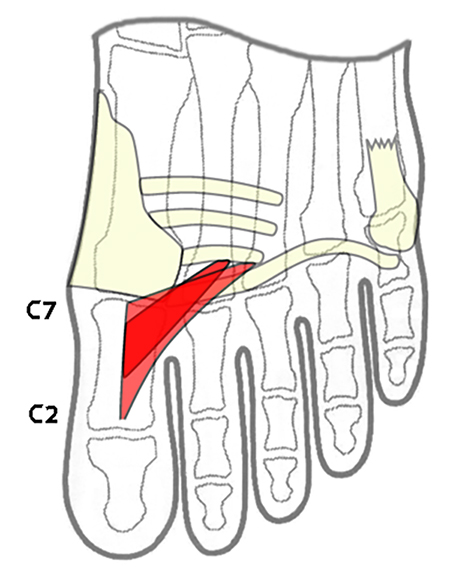The neck is highly mobile and yet strong enough to support and balance a heavy head (approx. 5 kg or11 lbs) on top of a 7 piece stack of vertebrae.
All of the about 20 muscles attached to the neck take part in the finely orchestrated dance of moving our head around.
The scalene muscle group holds a special position because it not only moves the neck, but also is involved with breathing as we mentioned in a previous article. Here we continue the story of the Scalenes:
Forward head posture as the main joker
In the western world with its sedative and ill postured lifestyle it is no wonder that about 1 out of 5 adults suffer from some degree of chronic neck pain. Here forward head posture is a major player forcing the scalenes to work overtime and build up tightness, inflammation and pain.
6 facts about the scalene muscles
- 3 muscles on each side of the neck (anterior, middle and posterior scalene)
- Origin: transverse processes of C2 to C7
- Insertion: 1st and 2nd rib
- Nerve supply, ventral branches of spinal nerves C3-C8
- Functions: Flexion and side bending of the neck, elevation of the rib cage (secondary breathing muscles)
- The brachial plexus passes through a “gate” between the anterior and middle scalene: potential impingement site.
Scalenes as the “Psoas of the neck”
The scalene group shares many similarities with the psoas muscles:
Both are long slender muscles originating from and running along the spine.
Both attach to solid structures, the rib cage and the pelvis/legs respectively.
Both play important roles as stabilizers of the spine.
By examining the fascia connections it is even possible to follow a direct mechanical tension line from the scalenes via the rib cage into the respiratory diaphragm and down into the psoas muscles.
Knowing about these connections makes it easier to understand how neck pain can be caused by respiratory conditions, tightness in the diaphragm, psoas tension, lumbar or pelvic instability, etc… and it provides us with valuable ideas for the reflexological intervention.
With the fascia relation in mind we use this work sequence in the Touchpoint Clinic:
Suggested work sequence for the scalenes
Assessments:
- Neck mobility
- Palpate muscles bilaterally
- Psoas test
Scalenes:
- Spinal nerves C3-C8
- Reflex for spinal attachments (transverse proc. C2-C7+ rib 1-2)
- Scalene muscle reflexes
Psoas connection:
- Work attachments for psoas and scalenes simultaneously (T12-L5 + C2-C7)
- Linking reflexes for scalenes and psoas
Related reflexes:
- Entire neck
- Entire spine
- Diaphragm
- Upper 2 ribs + the sternoclavicular joints eller bare Rib cage?
- Lungs, mediastinum incl. heart
Left scalene muscle reflexes (dorsal on foot)
All articles click here
Subscribe to newsletter









